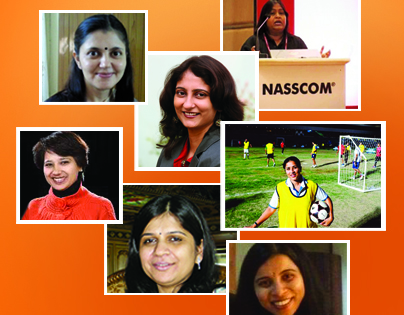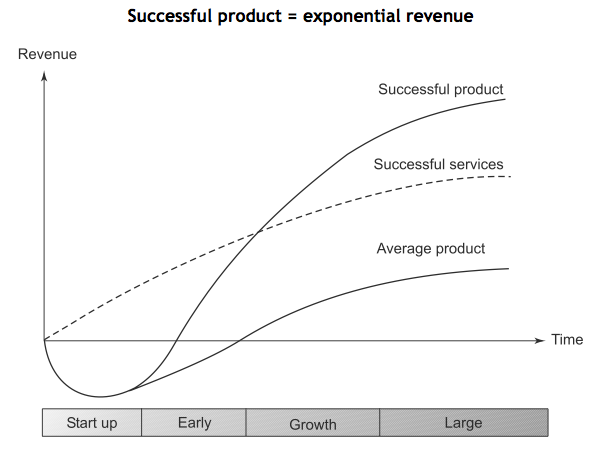The proverbial chicken and egg problem of building a new social product is well understood among tech startups, and it’s been commonplace to follow two contrasting mechanisms for getting traction.
Traditionally, startups have solved this problem by racing to connect users with each other, essentially providing them the pipes to interact with each other. Twitter, Facebook and LinkedIn have grown big with this connection-first model.
However, a new breed of networks is gaining ground with the content-first model. They provide users with tools to create a corpus of content, and then enable conversations around that content. Behance, Pinterest, Instagram, Dribble, Scoop.It have all gained traction by building a corpus of content before building a social network.
The two contrasting approaches are summarized below:
The rules of building a social product are changing. It’s important to understand this shift to build social products that can effectively gain traction on the internet today.The connection-first model is no longer as effective as it used to be. As the social web grows, and a larger number of social products compete for our attention, we are seeing a dramatic shift towards the content-first model. If you’re still getting users to send out Facebook invites, you’re adding to the noise, instead of standing out and getting noticed.
The Connections-first Social Product
Traditionally, the playbook for building network effects has been the following: Get users on board, connect them to each other and have them create content and conversations.
Social networks like Bebo, Facebook and Twitter used this playbook to create their respective networks leveraging address-book integrations and other hacks to rapidly build a large number of network connections.
The importance of building connections, in this model, cannot be emphasized enough. In fact, the growth teams at Facebook, Twitter and LinkedIn specifically aim for ‘X connections for a user within Y days of sign-up’ to activate the user.
Since a critical mass of connections is required before users experience value, the key to building a successful network is minimizing the friction in creating connections. Contact-list integration helped social networks like Facebook and LinkedIn gain initial traction through the removal of sign-up friction.
In spite of growth hacks like contact-list integration, there is always a lead time in getting users on board and reaching critical mass. This is the ‘gap’ where it becomes very difficult to demonstrate value in using the product.
Frictionless sign-up + Virality = Network Effects? Or not!
Startups often believe that removing friction in sign-up and creating some form of viral acquisition are the two key elements to reaching critical mass. In fact, with the rise of Facebook Connect and the social graph, a large number of social products have sprung up on the promise of frictionless sign-up and viral growth. However, users on the internet have limited time and attention. As more startups leverage the social graph and flood users with invitations to join their networks, users have started to develop invite fatigue.
Clearly, frictionless sign-up and virality are not the one-stop solutions we were hoping they would be.
The secret to network value
Startups often fail to appreciate the gap between technology and value proposition. For products like Evernote, technology serves the entire value proposition. However, for social products, the value proposition is a combination of technology and the content that users create on top of it. YouTube’s value lies in its hosting and streaming capability, but more importantly in its vast repository of videos.
The secret to creating a social product that demonstrates immediate value is to enable content before creating the network.
Content created on the network is the new source of competitive advantage. The videos on YouTube, the pictures on Instagram, the answers on Quora are the primary source of value for users and the key driver of competitive advantage for these platforms.
The Content-first Social Product
Today’s social startups don’t start off as networks. They start off as standalone apps. These products enable users to create a corpus of content first. They then connect the users with each other as a consequence of sharing that content.
Instagram started out as a photo-taking tool and built itself out into a social network subsequently. The initial focus was entirely on the creation of content and the connections were formed over time leveraging other social networks. It is unlikely that Facebook would have considered Instagram a direct competitor in its early days, largely owing to its model of deferring network creation.
How to create a network in stealth mode
Instagram started off as a standalone tool. In doing so, the product provides ‘single-user’ utilityto the user even when other users aren’t around on the network. There are two aspects to building single-user utility:
1. The single-user utility should allow creation of content that will ultimately form the core of the network. The core of Instagram is pictures. Discussions are centered around pictures. Hence, the single-user tool needs to allow creation of pictures. This is an extension of the OpenTable model, where a restaurant first manages its real-time seating inventory on a single-user tool, before that very inventory is exposed to consumers on a network, to allow them to reserve tables. Curation-as-creation products like ScoopIt and Storify also use this model to curate content which will serve as the core for network interactions.
2. The product should deliver greater value when users share their content with their friends. The product builds out the network at the backend as more content is shared. Hence, the social network gets created, effectively solving the chicken and egg problem. A new breed of curation-as-creation startups (Scoop.It, Paper.Li etc.) is gaining traction on a similar model.
The new playbook for creating social products is essentially the following:
- Have a vision for creating the network but do not start executing on network creation
- Enable a single-user tool that creates content that is core to social interactions
- Share this content on external networks (social networks, email, blogosphere)
- Capture interactions around the content to build network linkages at the backend
- Open out the network once a critical mass of linkages have been built
The rise of the content portfolio
Instagram demonstrates how a network is created around a portfolio of user-generated content. Behance and Dribbble have followed similar strategies by providing a portfolio for hosting designs, before adding value through the creation of a peer-review community. Initially, Pinterest appealed to the designer community as a tool to ‘bookmark’ their favorite designs, before it built out the network. Early adopters found enough value in the ability to store designs and pictures, to use the product before the network became active.
The new success factors
Frictionless sign-up and virality are important but they are no longer the key to building social products. The following are key to building content-first social products:
- Removal of barriers to the creation of content: Startups like Instagram, which succeeded in simplifying the creation process and in enabling users to spread the word, succeeded in eventually building the connections between users.
- Growing the creator base, not just the user base: Since value for the overall networks is scaled by scaling content creation, the platform needs to focus on incentivizing and increasing the percentage of users who create content.
- Strong curation models: Content-first social products scale well only when there is a strong curation model in place to separate the signal from the noise. Without strong curation, greater content can actually lead to a poorer user experience leading to reverse network effects.
- Incentives: The platform needs to encourage users to build out the connections. This works best when the platform encourages an innate motivation (self-expression or self-promotion) in the user to spread the word about her content. In doing so, the users build the necessary connections that set up the network.
The new growth hacks
In the connections-first model, the one hack that minimized friction in building connections was the contact list integration. In the content-first model, the hack that minimizes friction in creating content is the creation widget. Creation widgets have grown in popularity in recent times, spreading across the internet in the form of browser add-ons and one-click buttons. Several curation-as-creation startups like Pinterest and Scoop.it have used widgets to enable users to create content easily.
The future
This new model of building networks allows a social product to gain traction while value is being created by users. Once enough content is created, the users are connected and the network builds out. Social products that win will focus on enabling users to create content first and generate conversations around it. The creation of the actual social network will be a final step, as a consequence.
Note: This article was first featured on Sangeet’s blog, Platform Thinking (http://platformed.info). Platform Thinking has been ranked among the top blogs for startups, globally, by the Harvard Business School Centre for Entrepreneurship.



















